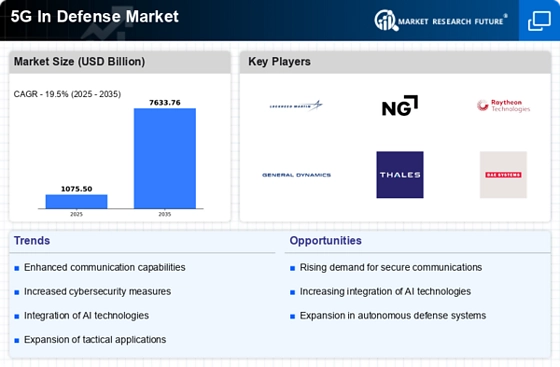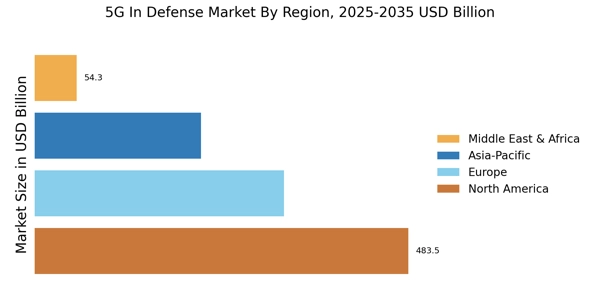Enhanced Operational Efficiency
The 5G In Defense Market is poised to revolutionize operational efficiency within military operations. The ultra-reliable low-latency communication provided by 5G technology enables real-time data sharing and decision-making, which is crucial in combat scenarios. This capability allows for improved coordination among various defense units, enhancing mission effectiveness. Furthermore, the integration of 5G with existing military infrastructure is expected to streamline logistics and supply chain management, potentially reducing operational costs by up to 30%. As defense organizations increasingly adopt 5G technology, the market is projected to witness substantial growth, with estimates suggesting a compound annual growth rate of over 20% in the coming years.
Enhanced Training and Simulation
The 5G In Defense Market is also benefiting from enhanced training and simulation capabilities. With the advent of 5G technology, military training programs can incorporate virtual and augmented reality applications that require high bandwidth and low latency. These immersive training environments allow personnel to engage in realistic scenarios, improving their preparedness for actual combat situations. The ability to conduct remote training exercises with real-time feedback is expected to enhance the effectiveness of military training programs. As defense budgets allocate more resources towards advanced training technologies, the market for 5G-enabled training solutions is likely to expand significantly.
Strengthened Cybersecurity Measures
The 5G In Defense Market is increasingly focused on strengthening cybersecurity measures. As military operations become more reliant on interconnected systems, the potential for cyber threats escalates. 5G technology offers advanced encryption and security protocols that can protect sensitive military communications and data. The emphasis on cybersecurity is reflected in defense budgets, with many nations allocating substantial resources to enhance their cyber defense capabilities. It is estimated that The 5G In Defense Market for defense applications could exceed USD 30 billion by 2027. This trend highlights the critical need for robust cybersecurity solutions in the 5G In Defense Market.
Integration of Internet of Things (IoT)
The integration of Internet of Things (IoT) devices within the 5G In Defense Market is a driving force behind the modernization of military operations. 5G technology supports a vast network of interconnected devices, enabling real-time data collection and analysis. This capability enhances situational awareness and operational readiness, as military personnel can access critical information instantaneously. The proliferation of IoT devices in defense applications is projected to grow, with estimates suggesting that the market could reach USD 15 billion by 2025. This trend indicates a shift towards more data-driven decision-making processes in defense, further solidifying the importance of 5G technology.
Advancements in Surveillance and Reconnaissance
The 5G In Defense Market is significantly influenced by advancements in surveillance and reconnaissance capabilities. The high-speed data transfer and enhanced connectivity offered by 5G technology facilitate the deployment of advanced drones and surveillance systems. These systems can transmit high-definition video and sensor data in real-time, allowing for more effective monitoring of potential threats. As nations invest in upgrading their surveillance infrastructure, the demand for 5G-enabled systems is expected to surge. Reports indicate that the market for military drones alone is anticipated to reach USD 10 billion by 2026, underscoring the critical role of 5G in enhancing defense capabilities.


















Leave a Comment